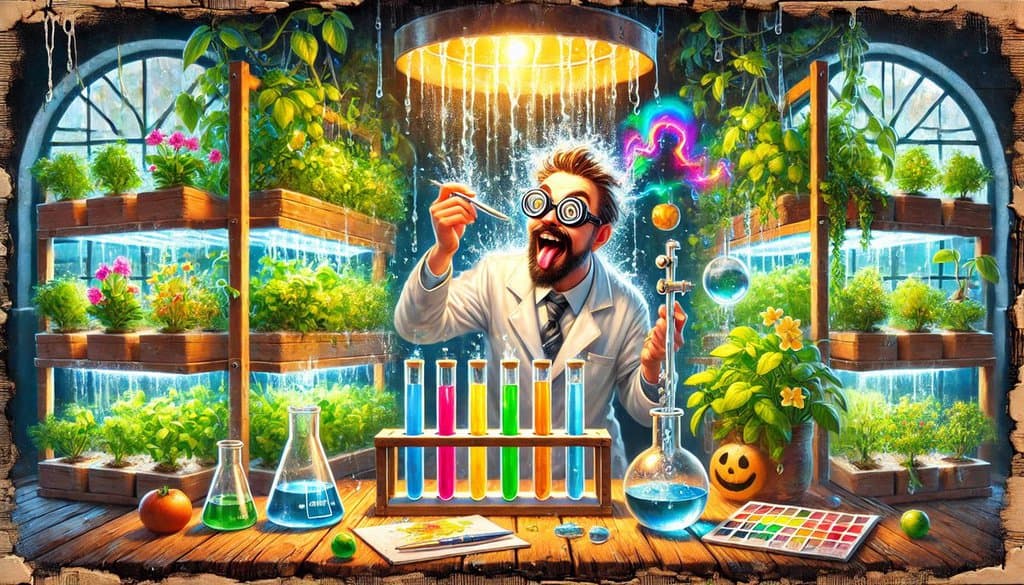Growing plants in air or mist environments without using soil, termed aeroponics, is an emerging trend. As a smart farmer, you might be intrigued by the idea and want to try it. However, just like with traditional farming, water quality plays a critical role in the success of your aeroponic plants. Managing water quality in your aeroponic system can be a breeze with the right guidance and techniques.
Importance of Water Quality
In aeroponics, water serves as the lifeblood of your plants. Without soil to provide nutrients and hydration, your plants rely solely on the mist or spray of water laden with essential nutrients. Therefore, the quality of the water you use in your aeroponic system holds paramount importance.
You should replace your nutrient solution every week to 10 days. It’s not because there are no nutrients left in the system, but there is no easy way to check what nutrients are left, so topping up with just water or more nutrient solution could result in nutrient inbalance and poor growth.
Consequences
Poor water quality can inhibit plant growth or, worse, harm your plants. It can lead to the spread of harmful bacteria, fungi, and other pathogens. Furthermore, key nutrients may not dissolve properly in poor-quality water, causing nutrient deficiencies in the plants.
Impact on nutrient absorption
Quality water is crucial for effective nutrient absorption. If the water quality is compromised, the plants’ ability to absorb the nutrients they need to thrive will be adversely affected. This can lead to stunted growth, discoloration, poor yield, and numerous other issues.
Identifying Water Quality Parameters
Several key parameters indicate water quality in an aeroponic system. Regular monitoring of these parameters will ensure optimal plant growth and productivity.
Dissolved oxygen levels
Dissolved oxygen (DO) refers to the amount of oxygen present in water. High levels of DO are essential in aeroponics as the roots of plants absorb oxygen directly from the water and root area. Starting with airated nutrient solutions would therefor be prefered.
pH levels
The pH level of the water is a measure of how acidic or alkaline it is. Most plants thrive in slightly acidic to neutral water, and a sudden fluctuation in pH can affect nutrient absorption. The optimal pH range is typically 5.5-6.5 for most crops.
Electrical Conductivity (EC) measurements
EC measures the amount of salts, or ions, in the water. High EC levels imply higher quantities of salts, which might interfere negatively with plant growth if they are too high. It’s crucial to regularly measure and adjust EC levels to provide optimal nutrients to your plants. Hard water also shows high EC, so starting with reverse osmosis(RO) water and adding nutrients is preferred as you have more control over what’s in the water.
Preventing and Eliminating Contaminants and Pathogens
Protecting your aeroponic system from harmful contaminants and pathogens is crucial to maintaining optimal plant health and your health. Molds, bacteria, fungi, viruses, and waterborne pests are common contaminants found in aeroponic systems. If not taken care of, these can cause disease and damage to your plants and you.
These contaminants and pathogens pose significant health risks to your plants and include leaf spotting, root rot, wilting, and other health issues, reducing plant vigor and yield. Regular system cleaning, using antimicrobial solutions and/or UV light, introducing beneficial microorganisms, and using quality source water(RO) are effective strategies for preventing and treating waterborne pathogens.
Water filtration in aeroponics
Filtration removes particulates, debris, and potential pathogens from your water, ensuring that only clean, pure water is misted onto your plants’ roots. Mechanical filters, activated carbon filters, reverse osmosis systems, and UV sterilizers are suitable filtration systems. Regular cleaning and maintenance of filtration systems are essential to ensure they function optimally, prolong their life, and maintain water quality consistently.
Regular Testing
As a rule of thumb, water testing should be performed at least weekly, especially if you don’t replace your nutrient soluytion. However, if your system is new or you’ve recently made adjustments, more frequent testing may be necessary. Understanding your test results is crucial for addressing any issues and making necessary adjustments. Often, the parameters are interrelated – change in one can impact the others. Different plants use different amounts of different nutrients and could cause an inbalance in the nutrients left after a week.
Routine monitoring
So to repeat, regularly check and adjust the pH, EC, temperature, and other relevant parameters. Each plant species grows best within a certain set of conditions, so understand and provide these conditions for best results.
Prompt disease and contaminant management
Take immediate steps to rectify the issue at the first sign of disease or contamination. Left unchecked, health issues can rapidly spread throughout your entire system.
Investing in quality equipment
Quality equipment such as filters, pumps, and sprayers are investments in the health of your plants, the productivity of your system, and the length of time it lasts before failing. Buying cheap nozzles or pumps is only price-effective as long as they last for years, not if you need to replace them “every week” because of poor quality.

